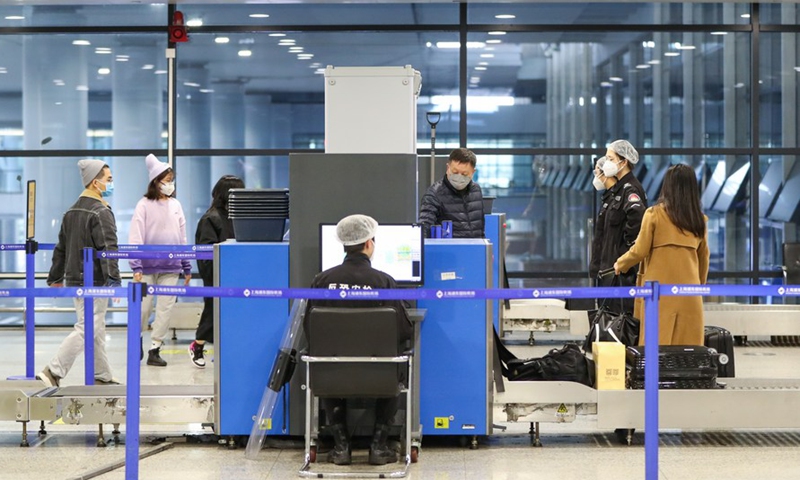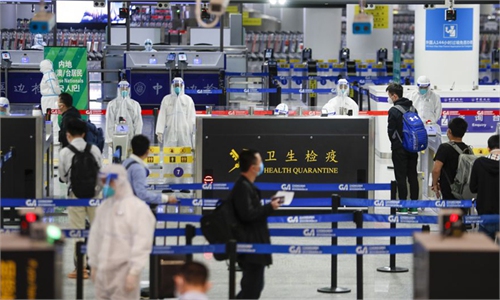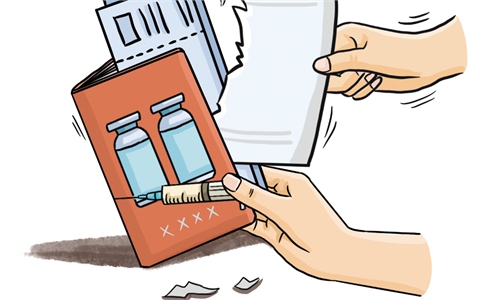
Passengers pass security checkpoint at Terminal 2 building of the Shanghai Pudong International Airport in east China's Shanghai, November 24, 2020. Photo:Xinhua
One can easily feel the envy, jealousy and perhaps a little bit of hatred from American elites when it comes to China's COVID-19 epidemic control measures and their remarkable results. To make up for their emotional loss, they tend to find fault with everything China does, trying to prove that the US has not lost its fight against the coronavirus and may eventually emerge as a winner.
Take this New York Times article. With the title "Think COVID's messed up your travel plans? Try getting into China," the article questioned China's strict entry restriction policies. The report claimed that China has "some of the world's most formidable barriers to entry," and as a result, families cannot be reunited, "lives have been upended and business has been disrupted."
Sounds like a student who failed the test now questions the performance of one peer who had a much better score?
Has China completely closed its door to foreigners? No. Instead, China has implemented a series of reasonable regulations. If foreign tourists want to travel to China, they need to apply for China's health certificate which contains an encrypted QR code. And foreign tourists need to comply with relevant quarantine policies after entering China. These are demands amid normalized COVID-19 prevention and control work.
However, the NYT made exaggerated descriptions of these facts and hyped the so-called forced separation of family members, trying to make the report sensational and discredit China as a country that violates human rights and freedom. Talking of the separation of family members, China's "separation" aims at their better reunion. And the NYT reporters are suggested to visit detention center at the US border to witness the harsh obstacles to family reunions.
Many foreigners have complied with China's policies on foreigners' entry and have successfully come into China.
For example, American vlogger Jerry Kowal released a video on March 15 recording how he flew from the US to China. He compared the different situations of anti-epidemic organization between China and the US and said China has "the best organized" COVID-19 prevention in the world.
Before vaccination can be proven to be truly effective in bringing pandemic under control in the US, American elites are "concerned" about China's vacation progress, saying "it has been slow compared to those of the US, Britain and other countries." China is quick to roll out a mass vaccination program even though it's not urgent to do so, since the virus has almost been wiped out within the country. With this advantage, it has supplied abundant amounts of vaccines to countries that need them more. What about US charity in vaccines?
The US lacks strict regulations and now puts all its hope on vaccines. But US' vaccination is also chaotic, with high-priced and even expired vaccines.
China's strict entry restriction policy is responsible to the Chinese people as well as people around the world. As the epidemic situation is still severe abroad, reducing the entry flow should be the basic policy direction. China is also carrying out active exploration to reopen the gate, such as vaccine passports and mutual recognition of COVID-19 vaccinations with other countries.
Instead of targeting China and trying to prove their victory in a paranoid way, American elites should ask themselves why their epidemic is still not controlled after all this time.


